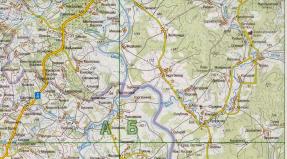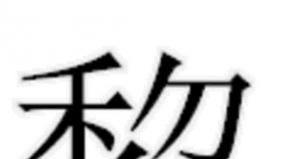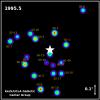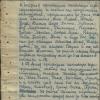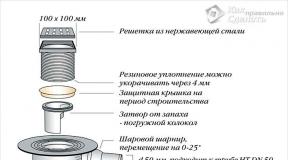The difference between the DShB and the Airborne Forces: their history and composition. Flag of the Airborne Forces "56 DShB" Iv. dislocation changes
56th Separate Guards Airborne Assault Order of the Patriotic War Don Cossack Brigade (light).
At the end of 1989, the brigade was reorganized into a separate airborne assault brigade (airborne brigade). The brigade passed through "hot spots": Afghanistan (12.1979-07.1988), Baku (12-19.01.1990 - 02.1990), Sumgait, Nakhichevan, Meghri, Julfa, Osh, Fergana, Uzgen (06.06.1990), Chechnya (12.94-10.96, Grozny, Pervomaisky, Argun and from 09.1999).
On January 15, 1990, the Presidium of the Supreme Soviet of the USSR, after a detailed study of the situation, adopted a decision "On declaring a state of emergency in the Nagorno-Karabakh Autonomous Region and some other regions." In accordance with it, the Airborne Forces began an operation that was carried out in two stages. At the first stage, in the period from 12 to 19 January, units of the 106th and 76th airborne divisions, the 56th and 38th airborne brigades and the 217th parachute regiment landed on airfields near Baku (for more details see . article Black January), and in Yerevan - the 98th Guards Airborne Division. The 39th separate airborne assault brigade entered Nagorno-Karabakh.
Since January 23, Airborne Forces have begun operations to restore order in other parts of Azerbaijan. In the area of Lankaran, Priship and Jalilabad, they were carried out jointly with the border troops, who restored the state border.
In February 1990, the brigade returned to its place of permanent deployment.
From March to August 1990, brigade units maintained order in the cities of Uzbekistan and Kyrgyzstan.
On June 6, 1990, the landing at the airfields in the cities of Fergana and Osh of the 104th paratrooper regiment of the 76th airborne division, the 56th airborne brigade began, and on June 8, the 137th paratrooper regiment of the 106th airborne division in Frunze. Having made a march on the same day through the mountain passes of the border of the two republics, the paratroopers occupied Osh and Uzgen. The next day, the 387th separate paratrooper regiment and units of the 56th airborne brigade took control of the situation in the area of the cities of Andijan, Jalal-Abad, occupied Kara-Suu, mountain roads and passes throughout the conflict territory.
In October 1992, in connection with the sovereignty of the republics of the former Soviet Socialist Republic, the brigade was relocated to the village of Zelenchukskaya, Karachay-Cherekessia. From where it marched to the place of permanent deployment in the village of Podgory near the city of Volgodonsk in the Rostov region. The territory of the military camp was a former watch camp for the builders of the Rostov NPP, located 3 kilometers from the nuclear power plant.
From December 1994 to August - October 1996, the combined battalion of the brigade fought in Chechnya. On November 29, 1994, an order was sent to the brigade to form a consolidated battalion and transfer it to Mozdok. The brigade's art division took part in the late 1995 - early 1996 operation at Shatoi. In October-November 1996, the combined battalion of the brigade was withdrawn from Chechnya.
In 1997, the brigade was reorganized into the 56th Guards Airborne Assault Regiment, which became part of the 20th Guards Motorized Rifle Division.
In July 1998, by order of the Minister of Defense of the Russian Federation, in connection with the resumption of construction of the Rostov NPP, the regiment began redeployment to the city of Kamyshin, Volgograd Region. The regiment was housed in the buildings of the Kamyshin Higher Military Construction Command and Engineering School, which was disbanded in 1998.
On August 19, 1999, an airborne assault detachment from the regiment was sent to reinforce the consolidated regiment of the 20th Guards Motorized Rifle Division and was sent to the Republic of Dagestan as a literal military echelon. On August 20, 1999, the airborne assault detachment arrived in the village of Botlikh. Later he took part in hostilities in the Republic of Dagestan and in the Chechen Republic. The battalion tactical group of the regiment fought in the North Caucasus (stationed in Khankala).
In December 1999, units of the regiment and the DShMG FPS covered the Chechen section of the Russian-Georgian border.
On May 1, 2009, the airborne assault regiment again became a brigade. And on July 1, 2010, it moved to a new state and became known as the 56th separate airborne assault brigade (light).
It should be noted that over all these years, the Combat Banner of the 56th separate air assault brigade, despite all 4 renaming and 4 reorganization of the staff structure, remained the same. This is the Battle Banner of the 351st Airborne Regiment.
The history of the unit in the Afghan war:
The brigade was formed by 10/01/1979 according to the state number 35/901 (approved by the NGSH on 9/11/1979) on the basis of the 351st Guards. PDP of the disbanded 105th Guards Airborne Division in Chirchik (Uzbekistan).
The former commander was appointed. 351st Guards. PDP Guards. p / p-k Plokhikh A.P. (commanded the regiment since October 1976);
The brigade became part of the ground forces and is subordinate to the commander of the TurkVO.
The basis of the formation - the 4th airborne assault battalion is equipped with a l / s from three infantry divisions of the 351st guards. PDP; 1st, 2nd, 3rd pdb - by military conscription in autumn 1979, reconnaissance company of 351st guards. PDP, artillery division - l / s artillery regiment of the 105th division.
The composition of the brigade - 4 battalions (3 pdb, dshb) and an ad, 7 separate companies (reconnaissance company, autorot, engineer-sapper company, airborne support company, repair company, communications company, medrota), 2 separate batteries (ATGM battery, anti-aircraft missile artillery battery), 3 separate platoons - RHR, commandant and economic, orchestra.
Afghanistan
12/11/1979 - the brigade was put on full combat readiness (by the oral telephone order of the TurkVO command).
12.12.1979 - an order was received to redeploy from the Soz-Su station to the Jarkurgan station, Termez district (with the exception of 2 battalions - the 3rd PDB was transferred by helicopters from the Chirchik airfield to the site in the Sandykachi area 150 km from the city of Mary, Turkmenistan, 1st pdb - to the Kokaydy airfield, Termez district).
12/18/1979 - the brigade (except for the 3rd battalion) concentrated 13 km north-east of Kokayda.
12/27/1979 - the 4th rifle brigade crossed the state border with Afghanistan and guarded the Salang pass on the Termez-Kabul highway.
12/28/1979 - The 3rd Infantry Division was deployed by helicopters to Afghanistan and captured the Rabati-Mirza pass on the Kushka-Herat highway.
13-14.1.1980 - by order of the com. The TurkVO brigade has crossed the border and is concentrated near the Kunduz airfield.
January 1980 - the 3rd PDB was relocated to the Kandahar airfield; the numbering of the battalions of the 3rd pdb was changed, received the No. 2 pdb, the 2nd pdb-№ 3-rd pdb.
February 1980 - 4th Air Force Base was relocated to Charikar, Parwan Province.
By 1.3.1980 - the 2nd PDB was excluded from the brigade (the 70th Guards Omsb Brigade was formed from the l / s: the Kandahar airfield);
The 3rd Infantry Division was reorganized into the DSB (armored vehicles were received in the 103rd Guards Airborne Division in Kabul and transferred to the brigade under its own power).
?. 1980 - 4th Air Force Base was relocated to the PPD near the Kunduz airfield.
6/30/1980 - the brigade was assigned a field mail number - military unit p / p 44585.
?. 1981 - a logistics company (RMO) was formed on the basis of an autotransporter and a service platoon.
1.-6.12.1982 - the brigade was redeployed to Gardez, Paktia province; 3rd dshb is stationed near n. Souffla, Logar province, on the Kabul-Gardez highway.
1984 - regular reconnaissance platoons were included in the battalions (directive of the General Staff of 11.11.1984);
the brigade was awarded the Challenge Red Banner of the Military Council of the Ground Forces (order of the GKSV No. 034 of 11/21/1984)
1985 - the ministry of battalion of the 3rd and 4th infantry battalions and the optabatr of the 1st infantry battalion were reorganized into sabatr (SO "Nona"), the brigade was re-equipped with BMP-2
4.5.1985 - by the decree of the Presidium of the USSR Armed Forces, the brigade was awarded the Order of the Patriotic War of the 1st degree No. 56324698.
10/23/1986 - the fourth battalion (air assault) was added to the brigade: the 4th airborne battalion received No. 2dshb, the newly formed battalion - No. 4dshb.
Since December 1, 1986 - a new staff number 35/642 according to the directive of the headquarters of TurkVO No. 21/1/03182. The staff of the brigade is 261 officers, 109 warrant officers, 416 sergeants, 1666 soldiers.
06/10/1988 - the beginning of the withdrawal of the main part of the brigade from Afghanistan.
12-14.6.1988 - brigade units crossed the border.
6/14/1988 - the brigade is stationed in the new PPD (Iolotan, Turkmenistan).
The commanders of the 56th Guards. odshbr (12.1979-5.1988):
1. P / p-k, p-k Plokhikh A.P. (12.1979-6.1981)
2. P / p-k Korpushkin M.A. (6.1981-4.1982 gg.)
3. P / p-k Sukhin V.A. (4.1982-4.1983)
4. P / p-k Chizhikov V.M. (4.1983-11.1985)
5. P / p-k Raevsky V.A. (11.1985-8.1987)
6. P / p-k Evnevich V.G. (8.1987-during withdrawal)
in memory of the soldiers - internationalists "Shuravi"
and personally the director of the museum, Salmin Nikolai Anatolyevich.
Part history
56th Guards. separate air assault brigade
... The brigade was formed by 10/01/1979 according to the state number 35/901 (approved by the NGSH 9/11/1979) on the basis of the 351st Guards. PDP of the disbanded 105th Guards airborne division in Chirchik (Uzbekistan).The former commander was appointed. 351st Guards. PDP Guards. p / p-k Plokhikh A.P.(commanded the regiment since October 1976);The brigade became part of the ground forces and is subordinate to the commander of the TurkVO.
... The basis of the formation - the 4th airborne assault battalion is equipped with a l / s from three pdb of the 351st guards. PDP; 1st, 2nd, 3rd pdb - by conscripts in autumn 1979, reconnaissance company of the 351st guards. PDP, artillery division - l / s artillery regiment of the 105th divisions.
... The brigade consists of 4 battalions (3 pdb, dshb) and an ad, 7 separate companies (reconnaissance, autorot, engineer-sapper company, airborne support company, repair company, communications company, medrota), 2 separate batteries (ATGM battery, anti-aircraft rocket and artillery battery), 3 separate platoons - RHR, commandant and economic, orchestra.

Afghanistan
12/11/1979 - the brigade is brought to full combat readiness (according to oral telephone order com. TurkVO).
12.12.1979 - an order was received to relocate from the Soz-Su station to Dzharkurgan station, Termez district (with the exception of 2 battalions - the 3rd by helicopters from the Chirchik airfield to the site in the area of the settlement Sandykachi is 150 km from Mary, Turkmenistan, 1st pdb - at the Kokaydy airfield, Termez district).
12/18/1979 - the brigade (except for the 3rd battalion) concentrated in 13 km northeast of Kokayda.
12/27/1979 - 4th dshb crossed the state border with Afghanistan and took under the protection of the Salang pass on the Termez-Kabul highway.
12/28/1979 - 3rd pdb was deployed by helicopters to Afghanistan and captured Rabati-Mirza pass on the Kushka-Herat highway.
13-14.1.1980 - by order of the com. TurkVO brigade crossed the border and concentrated near the Kunduz airfield.
January 1980 - the 3rd PDB was relocated to the Kandahar airfield; changed the numbering of the battalions of the 3rd pdb received No. 2 pdb, 2nd pdb-No. 3 rd pdb.
February 1980 - 4th Air Force Base was relocated to Charikar, Parwan Province.
By 1.3.1980 - the 2nd PDB was excluded from the brigade 70th Guards. ombr: Kandahar airfield);
3rd Infantry Division was reorganized into DSB (armored vehicles were received in the 103rd Guards Airborne Division in Kabul and transferred to the brigade under its own power).
?. 1980 - 4th Air Force Base was relocated to PPD near the Kunduz airfield.
06/30/1980 - the brigade was assigned the field mail number - military unit p / p 44585.
?. 1981 - a logistics company (RMO) was formed on the basis of an autorot and service platoon.
1.-6.12.1982 - the brigade was redeployed to Gardez, Paktia province; 3rd dshb is stationed near n. Souffla, Logar province, on the Kabul-Gardez highway.
1984 - regular reconnaissance platoons were included in the battalions (directive of the General Staff from 11.11.1984 g.);
the brigade was awarded the Challenge Red Banner of the Military Council of the Ground Forces (order of the GKSV No. 034 dated 21.11.1984)
1985 - the ministry of battalion of the 3rd and 4th infantry brigades and the optabatr of the 1st infantry brigade were reorganized into sabatr (SO "Nona"), the brigade was rearmed on the BMP-2
4.5.1985 - by the decree of the Presidium of the USSR Armed Forces, the brigade was awarded the orderWorld War I degree No. 56324698.
10/23/1986 - the fourth battalion was added to the brigade (airborne assault): 4th Air Assault Battalion received No. 2 Air Assault Battalion, a newly formed battalion - No. 4 dshb.
From 1.12.1986 - a new staff number 35/642 according to the directive of the headquarters of TurkVO No. 21/1/03182. The staff of the brigade is 261 officers, 109 warrant officers, 416 sergeants, 1666 soldier.
06/10/1988 - the beginning of the withdrawal of the main part of the brigade from Afghanistan.
12-14.6.1988 - brigade units crossed the border.
6/14/1988 - the brigade is stationed in the new PPD (Iolotan, Turkmenistan).

The commanders of the 56th Guards. odshbr (12.1979-5.1988):
1. P / p-k, p-k Plokhikh A.P. (12.1979-6.1981yy.)
2. P / p-k Korpushkin M.A. (6.1981-4.1982 gg.)
3. P / p-k Sukhin V.A. (4.1982-4.1983)
4. P / p-k Chizhikov V.M. (4.1983-11.1985)
5. P / p-k Raevsky V.A. (11.1985-8.1987)
6. P / p-k Evnevich V.G. (8.1987-during withdrawal)

Combat operations (1980-1988)
1980 year
1.
January 1-12, 1980 Divisions 1, 2 pdb -
January 13-14, 1980 G. -
brigade (without 2nd, 4th battalions) deployed near Kunduz
4. January 26-28, 1980 3rd dshb, adn; Imamsahibpp, zrabotr
14. April 7-24, 1980 3rd dshb Akhtam Valley, Khanabad, Khojagar, Saraki Mamai 15. April 9-16, 1980 4th dshb Valley of the r. Panjshir
16. May 3-7, 1980 3rd dshb (without the 7th dshr and minbatr); Baghlanpp
28. August 27-30, 1980 3rd dshb (without 8th dshr),Modjar, Ortabulaki, Alefberdy, Guard 4th ydshb; 3rd abatr / adn, pp, isr
33. October 10-14, 1980 3rd dshb Imamsahib, Alchik, Khozarbach, Khojagar
38. pp Khoja Goltan
40. November 25, 1980 1st pdb, 4th dshb (without Gortapa 10th dshr and minbatr);
41. December 2-3, 1980 1st pdr / 1, 11th dshr / 4 Elevation 1028.0 (province?) 42. December 5, 1980 7th dshr / 3 Zardkamar
44. December 16-19, 1980 3rd dshb (without 8, 9th dshr)Madjar, Beshkapa, Ishkim, Shahravan, Basiz, Karaul11th dshr / 4, 2nd abatr / adn, ex. isr

1981 year
1. January 20-31, 1981 3, 4th dshb, adn; Imamsahib, Khojagar, Nanabad pp
2. 11-12 February 1981 1st pdb (without 1st pdr), 4th dshb (without minbatr); Aksalan, Yangarykh
3. February 17- 4th dshb Maimene, Tashkurgan March 14, 1981
7. March 22 - June 5, 1981 brigade (without 1st PDB and ADN); Lashkargah, Darveshak, Marja
12. August 19- 4th dshb Bagram, Dehi Kalan September 2, 1981
14. August 20, 1981 8th dshr / 3, 2nd pdr / 1, Kunduz, Sherkhan 1st abatr / adn
15. August 27- 2nd pdr / 1 Mazar Sharif September 6, 1981
17. August 31- 3rd pdr / 1, 9th dshr / 3 Ain Ul Majar September 1, 1981
23. October 23- 4th dshb Akcha, Mazar-i-Sharif, BalkhNovember 5, 1981
27. December 6, 1981 pp Baghlan December 1 - 5, 1981 g. - redeployment of the brigade under Gardez province Paktia
1982 year
1. April 14-25, 1982 4th dshb; Gundai and back) pp; ex. reabatr, vzv. isr
2. May 27 - June 4, 1982 4th dshb; Souffla, Kalaseyida, Gosharan, Kalamufti, Badash Kalay, Gaday Heil, Hayrabad (Gardez - Kabul - Ghazni route) pp, isr, 3rd abatr / adn, ex. reabatr, vzv. ZU-23-2
3. June 17-24, 1982 3, 4th dshb; Baraki, Muhammadaga-Wuluswali, Gomaran 3rd pdr / 1, pp, isr, reabatr, 2nd abatr / adn; ex. ZU-23-2
4. September 19-21, 1982 1st pdb; Gwareza, Melan, Sipahiheil 10th dshr / 4
5. September 20-25, 1982 4th dshb, Gardez, Naray, Alikheil, Gul Gundai (march to Gul Gundai and back) pp, 2nd pdr / 1, 2nd abatr / adn ex. reabatr, vzv. ZU-23-2
6. October 4-15, 1982 1st pdb, 4th dshb; Muhammadaga-Wuluswali, Dehi Kalan, Hayrabad pp, 8th dshr / 3, isr, 2nd abatr / adn, reabatr
7. November 23-26, 1982 4th dshb; Matvarh, Neknamkala pp, 2nd abatr / adn; ex. ZU-23-2, isv
8. November 27-28, 1982 1st pdb; Ushmanheil, Wuluswali Saidkaram, Kosin ex. 2nd? abatr / adn, vzv. reabatr, vzv. ZU-23-2, isv
9. December 16-18, 1982 1st pdb, 3rd dshb (without Padhabi Shana, Dadoheil Maliheil 7th dshr); pp, 2nd abatr / adn; ex. reabatr, vzv. ZU-23-2

1983 year
1. January 12-22, 1983 3, 4th dshb; Barracks, pp, isr, 2nd pdr / 1, 3rd abatr / adn; southern outskirts of Kabul ex. reabatr, tv
2. February 27- 4th dshb; Gardez, Naray, Alikheil, Gul Gundai March 5, 1983 isv
3. March 28-30, 1983 3rd dshb (without company); Qutubheil, Dehi Manaka, Maliheil pp; ex. ? abatr / adn
4. May 16-17, 1983 3rd dshb (without company); Nyazi, Babus, Dadoheil, Shashkala, Safedsang pp, ex. reabatr, vzv. ? abatr / adn, isv, tv
5. June 2-3, 1983 3rd dshb (without company); Muhammadaga-Wulusvali, Kalashikha, Kalasayida pp; isv, tv
6. July 9-12, 1983 1st pdb, 4th dshb; On the escort route: Tera pass - Muhammadaga-Wuluswali) pp, isr, rs; tv
7. 8-11 August 1983 1st pdb (without company), Srakala, Karmashi, Zavu, Kospi, Bara Sidjanak 4th dshb (without company), adn (without battery); pp; ex. ZU-23-2, isv, tv
8. September 12-26, 1983 1st pdb, 4th dshb (without company); On the route: pp, 2nd abatr / adn; Gardez - Aliheilex. ZU-23-2, tv, isv
9. November 28- 3, 4th dshb; On the route: December 4, 1983 pp; Souffla - Muhammadaga-Wuluswaliisv, tv

1984 year
1. January 5-28, 1984 1st infantry battalion (without a company), 4th infantry battalion, adn (without battery); Urgun County zrabotr (without platoon), pp, rs, rmo, rdo, rem. company; ex. optabatr / 1?
2. February 13-19, 1984 1st pdb, 3rd dshb (without company), adn (without 2nd abatr); 15 km southeast Kabul 10th dshr / 4, pp, rmo, rem. company; ex. ZU-23-2
3. March 5-9, 1984 4th dshb (without company); Khilihan, Naray pp, 3rd abatr / adn, rmo, pc, rem. company; ex. ZU-23-2, command. ex.
4. May 27 - June 12, 1984 4th dshb; On the escort route: ex. minbatr / 1, isv, tv Naray - Aliheil
5. July 4-16, 1984 4th dshb (without company); Valley Zurmat, pp, 2nd abatr / adn; Zara Sharan isv, tv
6. July 27-29, 1984 4th dshb Combat landing in the area of height 3667 (province?)
7. 3 - 27 August 1984 1st pdb (without a company); Naray 3rd abatr / adn; ex. reabatr, isv, tv
8. August 11-16, 1984 3rd dshb; Logar Province 10th dshr / 4, 1st abatr / adn; tv
9. September 3-15, 1984 4th dshb; Dubandi 2nd abatr / adn, ex. reabatr, tv, command.
10. 23 September- 3, 4th dshb, adn; Dubandi, Pachalara, Kabul October 10, 1984 pp, isr, rs, rmo, rdo, rem. company;tv
11. October 20-31, 1984 1st pdb (without company), 4th dshb, Urgun valley adn (without battery); pp, isr, rs, rmo, rdo, rem. company
12. November 21-26, 1984 3, 4th dshb; Logar Province 1st abatr / adn, pp, isr, rs
13. December 7-24, 1984 1st pdb (without company), Naray, Alikheil, Harshatal 4th dshb, adn (without battery); pp, isr, rs, rmo, rdo, rem. company; tv, vzv. ZU-23-2, command. vzv., OPA

1985 year
2.February 13, 19853rd abatr / adn, rmo, rem. company;
3.4-18 March 19854th dshb; Urgun pp, 2nd abatr, / adn, sabatr / 1, pc, rmo, rdo, rem. company ex. reabatr, isv, zrv, tv, command. ex.
4.April 10-23, 19851st pdb; Naray 2nd abatr / adn, rs, rmo, rdo, rem. company; ex. reabatr, isv, tv, zrv, command. ex.
5.May 19-June 12, 19853, 4th dshb, Asadabad - Barikot adn (without battery); zrabatr, pp, isr, rmo, rem. company, rdo; tv, command. vzv., OPA
7.August 2, 1985 adn (without 2nd abatr); zrabatr, isr, pc, rmo, rdo, rem. company, honey. company; tv, command. vzv., OPA
9.September 3, 1985adn (without battery); pp, rs, rmo, rdo, rem. company, honey. company; tv, zrv, command. vzv., OPA
11 September 18, 19854th dshb (12.-18.9.);r-not Host isr, pc;command. ex.
12.September 23-October 5, 1985 1st pdb (without company), 4th dshb, adn (without 2nd abatr); 20 km south-west Kabul, Baraki pp, isr, rmo, rdo, rem.rota,honey. company; tv, zrv, command. ex.
13.November 19-December 11, 19851st pdb, 4th dshb, adn (without battery); Dukhana, Kandahar pp, isr, rs, rmo, rdo, honey. company, rem. company, zrabotr, optabatrcommand. vzv., OPA
14.23-31 December 1985 1st pdb (without company), 4th dshb Parwan province, Kapisa - Charikara green area (without company), 3rd dshb (without 2mouth), adn (without battery); pp, isr, rs, rmo, rdo, rem. company, honey. company; tv, zrv, command. vzv., OPA

1986 year
1. January 22- 1st pdb, adn (without battery); Naray February 2, 1986 rmo, rdo, rem. company, honey. company; orv / 4, tv, isv, zrv, command. vzv., OPA
2. March 4 - April 23, 1986 1st pdb, 4th dshb (without sabatr), adn (without 2 batteries); Host pc; command. ex.
3. May 12-24, 1986 1st pdb (without company), 4th dshb, adn (without 2 batteries); Naray city, Alikheil pp, part rs, rmo, rdo, rem. companies and honey. companies; ISV, ZRV, TV, VZV. ATGM, command. vzv., OPA
4. June 14-July 12 4th dshb; Kunduz province part of pc, isr; ex. RHZ
5. July 27 - August 2, 1986 4th dshb, adn (without 2 batteries); Wardak Province 1st pdr / 1, rem. company; ISV, TV, ZRV, Command VZV.
6. August 9-14, 1986 3, 4th dshb, adn; Logar Province pp, pc; orv / 1
7. September 5-12, 1986 2nd dshb, part of adn; Kabul province pp, isr; orv / 1, tv
8. September 28-October 14, 1986 1st pdb (without a company), 2nd dshb (without a company), adn; Naray city, Alikheil pp, rs, isr, rmo, rdo, rem. company; tv, command. vzv., VUNA, OPA
9. December 10-25, 1986 1st pdb (without a company), 2nd dshb (without a company); Logar Provinces, Ghazni pp, isr, rs, part of rmo and rem. companies, OPA

1987-88 year
1. 2-21 March 1987 1st PDB (without 1st PDD), Wardak Province, Paktika 2nd dshb (without 6th dshr), adn (without 1st abatr); pp, isr, rs, rmo, rdo, rem. company; tv, command. vzv., OPA
2. April 6-25, 1987 brigade - 1st pdb (without 1st pdr), 2nd dshb (without 4th dshr), adn (without 1st abatr); Nangarhar province - Melawa base and transshipment base Marulgad pp, isr, rs, rmo, rdo, rem. company; tv, command. ex.
3. May 21 - June 14, 1987 1st pdb (without 2nd pdr), 2nd dshb (without 4th dshr), adn (without 1st abatr); Chakmani, Aliheil, Bayanheil pp, isr, rs, rmo, rdo, rem. company, zrabotr; tv, command. ex.
4. June 25 - July 11, 1987 1st pdb (without 2nd pdr), 2nd dshb (without 5th dshr), adn (without 1st abatr); Base district Sanglah pp, isr, rs, rmo, rdo, zrabatr; ex. RHZ, command. ex.
5. July 17-28, 1987 1st pdb, 2nd dshb, adn (without 2 batteries); Along the route: Kabul - Ghazni - Shahjoy - Kalat - Kabul pp, isr, pc, rem. company; tv
6. September 1- 1st pdb, 2nd dshb; Paktia province October 12, 1987 pp, isr, pc, rem. company; tv, command. ex.
7. October 12-14, 1987 2nd dshb (without 6th dshr), 3rd dshb (without 7th dshr), 1st and 2nd abatr / adn; Logar Province ISR, RS, Rem. company, honey. company, zrabotr; ex. RHZ, OPA
8. December 16, 1987 - January 21, 1988 1st pdb (without 3rd dshr), 2nd dshb (without 4th dshr), adn (without 1, 4th abatr); Basic district of Srana; along the Gardez - Khost road: on the site Saidheil - Savaykotpp, pp, isr, rs, rmo, rem. company,orv / 3, 1 / 7th dshr; tv, zrv, vzv. RHZ, command. ex.
9. January 21-March 19, 1988 2nd dshb; Satekandav pass minbatr / 1; ex. reabatr, isv
10. March 10-25, 1988 2nd pdr, pp,? / 7th dshr; ? orv / 1, orv and grv / 3, isv, vzv. ? abatr / adn
11. April 3-30, 1988 1, 2nd pdr / 1, pp,? Abatr / adn; Escort on routes - to Khost, Alikheil, Ghazni orv / 1, orv / 2, vzv. minbatr / 1, isv
12. May 10-15, 1988 2nd dshb Aliheil May 15 - June 15 - preparation of the brigade for withdrawal
13. May 25-30, 1988 1st infantry battalion (without a company), 2nd infantry battalion (without a company), 3rd battalion brigade (without a company) Ghazni province
14. May 31, 1988 2nd pdr and orv / 1, Manaray 4th dshr / 2
A very interesting material about changes in the composition of the 56th separate guards airborne assault brigade of the Russian Airborne Forces, stationed in Kamyshin (Volgograd region). The new composition of the brigade is characteristic: a reconnaissance battalion (mainly on the BTR-82), an airborne assault battalion on a BMD-2, an airborne assault battalion on a BMP-2, an airborne assault battalion on UAZ-3163 vehicles.
Original taken from a colleague twower in Rearmament of the 56th odshbr

The battalion of the 56th separate guards airborne assault brigade of the Russian Airborne Forces equipped with BMD-2 airborne combat vehicles on the march during a surprise check of the combat readiness of the troops of the Central Military District, September 2015 (c) Ministry of Defense of Russia
*****
... in the 13th year, again the Supreme Commander-in-Chief, Minister of the Harrow of the Russian Federation, it was decided to return, in particular, the 83rd Ussuriysk Guards Airborne Assault Brigade, the 11th located in Ulan-Ude, also an airborne assault brigade. And the 56th Guards Airborne Assault Brigade, part of the Airborne Forces. All organizational and staff activities were carried out in accordance with the established procedure, the Airborne Forces commissions, these formations dispersed, the commission brigades were accepted into the Airborne Forces, and from this moment I will speak primarily for my 56th Guards Airborne Assault Brigade. We began a new stage of development, we began to receive new models of equipment, weapons, as I said, in 1914 the first thing we received was a battalion on BMD-2. The line of cars "GAZ 66" and "Ural 4320", which became obsolete by new "Kamaz" cars of the "Mustang" family, were completely replaced. Due to the fact that the KamAZ concern has ample opportunities and a wide range of products, it was able to fully satisfy the requirement of the State Defense Order of the Ministry of Defense, and deliver to our unit both special vehicles of the combat arms and services based on the Kamaz 5350, and on-board vehicles, including vehicles with reinforced body armor. The experience of participation in local armed conflicts showed the need to create new units in military units and formations of the Airborne Forces, and re-equip existing ones. The Ministry of Defense and the command of the Airborne Forces decided to make major changes to the staff of our unit in 2016. In the 56th brigade, a reconnaissance battalion was re-formed, which was armed with the latest models of weapons and military equipment in a timely manner. Modern "BTR 82 AM", snowmobiles "A1", ATVs "AM1". These are unique machines, which are primarily intended for scouts, allowing them to carry out reconnaissance missions with high mobility in hard-to-reach terrain. In addition, in the 16th year, the 2nd Airborne Assault Battalion also moved from the UAZ 3151 to the modernized BMP-2 infantry fighting vehicles. That significantly increased the combat potential of the brigade. At the moment, according to the rearmament plan, we expect the delivery of new UAZ 3163 vehicles, this to the third airborne assault battalion, instead of the UAZ 3151. You all know such a car, "Patriot", we will have a pickup truck in addition to everything, which will ensure the battalion's maneuverability, respectively, both when loading aircraft into aircraft, and when performing raid missions, and, accordingly, maneuvers. All this is directly related to the tasks that our team performs. The re-equipment also affected the already existing control units, in particular, we receive new Andromeda-D complexes into the control company. These means allow specialists to ensure high maneuverability of control points, and in the shortest possible time to provide all types of communication for controlling subordinate units, as well as conducting electronic reconnaissance, and automatically determining the coordinates of radio emission. In addition, we are receiving new means of communication, these are radio stations such as Azart, which are designed to exchange information in real time, in various conditions. Including in the northern, mountainous, desert regions, wooded areas, between land and air, and sea objects. The main advantages of this radio station are portability, multifunctionality, the ability to work in relay mode, satellite navigation, exchange of navigation information, in a geographic and rectangular coordinate system. The ability to display a map of the area directly in the radio station. Determination of the location of subscribers and correspondents on it, file exchange, as well as the transfer of text messages in real time.
We have for the intelligence unit in service, the intelligence complex of the communications directorate "Strelets". Which, as a part of modern military equipment, is a unique product of military equipment, and the main control system of the "Ratnik" military equipment complex.
How do we train these servicemen? It's not a secret for anyone that this is all new, representatives of factories come to us, which are directly developing this equipment. And together with us, I personally study, and my soldiers study, they conduct classes with us. We train instructors, and then the smart one teaches the illiterate, and so on. If there is little consultation with the representatives of the plant, then we have a warranty period, when a representative of the plant always comes to us, provides additional assistance, advises, and if we need it, we leave for the plant for training.
And I would like to boast about the means of electronic warfare, the fact that, in particular, the means of electronic warfare are currently very serious coming into service. And it's not a secret for anyone that our partners from the other side also have them. But at the moment I can boast that we are much stronger than them. With the arrival of new types of electronic warfare equipment, the range of tasks of the brigade has expanded significantly. Now it is possible to create interference with optical-electronic means of reconnaissance, and aiming. The range of reconnaissance and suppressed frequencies has expanded, including frequencies with adaptive and programmed frequency tuning. Last year, retraining was carried out in the entire EW company of the brigade, on the basis of the inter-service training center for the combat use of EW troops in Tambov. My company left in full force, unlearned new samples, and now we have received the newest samples.
Well, the basis ... Accordingly, I have such a multifunctional complex of electronic warfare Infauna. This is the latest complex that provides group protection against being hit by radio-controlled mine explosive devices. This is a very serious machine, which we have already used in the exercise, and will be (inaudible).
Or here's another car, which we recently received, called Svet KU. This is a mobile means of radio engineering control and protection of information from leakage through technical wireless communication channels. This complex makes it possible to effectively solve the main tasks of technical control of troops of military facilities, models of weapons of military equipment. It allows you to completely block all communication, at a distance, let's say 60 kilometers from this complex, and also control it if necessary.
The company of electronic warfare is constantly engaged in combat training, we are trying to influence our own means on our own means, this is successful, and we practice it constantly.
At the moment, my brigade is staffed by almost 70% of the military personnel under the contract.
And I will say, if you take the 96th, 97th year - the conscripts who came to serve, and who are now going to serve, these are two different contingents, absolutely. First of all, our recruits who are entering now, they ... I am not afraid of this word, they are more educated. From my conscription, about 40% have a secondary vocational education, which, as a matter of fact, was not always the case before. And I will say, people's eyes are burning with the word of the Airborne Forces, they want to become strong, strong, to learn what the senior call has.
Strike unit, I will briefly give some definition, this is the most combat-ready unit. There are a number of relevant criteria for it. Firstly, combat training in the shock subunit must be carried out at a high methodological level, and, accordingly, the results must not be lower than a good mark. In addition, the personnel of the shock subunits must be disciplined; in the shock subunit, crimes, any kind of incident, loss, shortage are never allowed. In addition, the strike subunit must be 100% equipped with equipment, weapons, and stocks of materiel. In accordance with the order of the commander of the Airborne Forces, my first paratrooper battalion was presented to this high name "shock", and the commission of the General Staff just a month and a half ago it was checked, where the chief of the general staff was asked to consider our battalion as a shock battalion. Therefore, I hope that some document will be released in the near future, and we will congratulate the battalion commander with the honorary title "shock", with the assignment.
Unfortunately, in recent years, in the program "Military Council", the invited military 99% of the time talked about showers, bonuses for fizo, the desire of conscripts to serve, recruiting for a contract and the whole bunch of competitions that were hung on all branches and types of troops. The conversations were similar to each other like twins, not differing in informational content. Thanks to Guards Colonel Valitov for not only being able to participate in the "compulsory program".
56th Separate Guards Airborne Assault Red Banner, Orders of Kutuzov and Patriotic War Brigade (56th Guards Airborne Assault Brigade) — military formationGround forces USSR Armed Forces , Ground Forces Russian Armed Forces and Russian Airborne Forces. Happy birthday formation is 11 June 1943 when 7th and 17th guards airborne brigades.Combat path during the Great Patriotic War
On 4th Ukrainian Front a strong airborne force grouping was deployed as part of the 4th, 6th and 7th Guards Airborne Brigades. It was planned to use it during the liberation of the Crimea.
In December 1943, the 4th and 7th Guards Airborne Brigades were redeployed to Moscow military district.
On January 15, 1944, in accordance with the order of the commander of the Red Army Airborne Forces No. 00100 dated December 26, 1943, in the city of Stupino, Moscow Region, on the basis of the 4th, 7th and 17th separate guards airborne brigades (the brigades were stationed in St. Vostryakovo, Vnukovo, Stupino) was formed 16th Guards Airborne Division... The division in the state had 12,000 people.
In August 1944, the division was redeployed to the city of Old Roads. Mogilev region and on August 9, 1944, it became part of the newly formed 38th Guards Airborne Corps... In October 1944, the 38th Guards Airborne Corps became part of the newly formed about separate guards airborne army.
On December 8, 1944, the army was reorganized into 9th Guards Army, 38th Guards Airborne Corps became Guards Rifle.
By order Headquarters of the Supreme Commander-in-Chief No. 0047 dated 12/18/1944, the 16th Guards Airborne Division was reorganized into 106th Guards Rifle Division 38th Guards Rifle Corps. The 4th separate guards airborne brigade was reorganized into the 347th guards rifle regiment, the 7th separate guards airborne brigade - into the 351st guards rifle regiment, the 17th separate guards airborne brigade - into 355- 1st Guards Rifle Regiment.
The 106th Guards Rifle Division included:
- 347th Guards Rifle Regiment;
- 351st Guards Rifle Regiment;
- 356th Guards Rifle Regiment;
- 107th separate guards anti-aircraft artillery battalion;
- 193rd Separate Guards Signal Battalion;
- 123rd separate guards anti-tank division;
- 139th separate guards sapper battalion;
- 113th Separate Guards Reconnaissance Company;
- 117th separate guards chemical company;
- 234th separate guards medical battalion.
The division also included the 57th artillery brigade with three regiments:
- 205th Cannon Artillery Regiment;
- 28th Howitzer Artillery Regiment;
- 53rd mortar regiment.
In January 1945, the division, as part of the 38th Guards Rifle Corps, was redeployed by rail to Hungary, by February 26 it was concentrated east of the city of Budapest in the area: Szolnok - Abony - Soyal - Teriel and at the beginning of March became part of 3rd Ukrainian Front.
March 16, 1945, breaking through the German defenses, 351st Guards Rifle Regiment went to the Austro-Hungarian border.
In March-April 1945, the division took part in Vienna operation, advancing in the direction of the main attack of the front. The division, in cooperation with the formations of the 4th Guards Army, broke through the enemy defenses north of the city of Szekesfehervar, went out to the flank and rear of the main forces 6th SS Panzer Army, wedged into the defenses of the front troops between lakes Velence and Balaton. In early April, the division struck in a northwestern direction bypassing Vienna and, in cooperation with the 6th Guards Tank Army, broke the enemy's resistance, advanced to the Danube and cut off the enemy's retreat to the west. The division fought successfully in the city, which continued until April 13.
By decree Presidium of the Supreme Soviet of the USSR of 03/29/1945 for participation in the defeat of eleven enemy divisions south-west of Budapest and the capture of Mor, the division was awarded Order of Kutuzov II degree.
For the breakthrough of the fortified line of defense and the capture of the city of Mor, the entire personnel received gratitude Supreme Commander-in-Chief.
By the decree of the Presidium of the Supreme Soviet of the USSR dated 04/26/1945, "for participation in the capture of Vienna", the division was awarded Order of the Red Banner... Since then, April 26 is considered the part's annual holiday.
During Vienna operation the division fought over 300 kilometers. On some days, the rate of its advance reached 25-30 kilometers per day.
From 5 to 11 May 1945, the division as part of the troops 2nd Ukrainian Front took part in Prague offensive operation.
On May 5, the division was alerted and marched towards the Austro-Czechoslovak border. Coming into contact with the enemy, on May 8, she crossed the border of Czechoslovakia and captured the city of Znojmo on the move.
On May 9, the division continued fighting in pursuit of the enemy and successfully developed an offensive on Retz, Pisek. The division made a march in pursuit of the enemy, and in 3 days it covered 80-90 km with battles. At 12.00 on May 11, 1945, the advanced detachment of the division reached the Vltava River and in the area of the village of Oleshnya met with American troops 5th Panzer Army... The division's combat path in the Great Patriotic War ended here.
History 1945-1979
At the end of hostilities, the division from Czechoslovakia returned to Hungary on its own. From May 1945 to January 1946, the division camped in the woods south of Budapest.
Based on the Decree of the Council of Ministers of the USSR No. 1154474ss dated 06/03/1946 and the directive Of the General Staff of the Armed Forces of the USSR No.org / 2/247225 from June 7, 1946 by June 15, 1946, the 106th Guards Rifle Red Banner, Order of Kutuzov, the division was reorganized into 106th Guards Airborne Red Banner Order of Kutuzov Division.
Since July 1946, the division was stationed in the city of Tula. The division was part of the 38th Guards Airborne Corps Vienna (corps headquarters - Tula).
Based on the directives of the Chief of the General Staff of the Armed Forces of September 3, 1948 and January 21, 1949 106th Guards Airborne Red Banner Order of Kutuzov Division as part of the 38th Guards Airborne Corps of Vienna, it became part of the Airborne Army.
In April 1953, the airborne army was disbanded.
On the basis of the directive of the Chief of the General Staff of the Armed Forces from January 21, 1955 to April 25, 1955, the 106th Guards Airborne Division withdrew from the 38th Guards Airborne Corps Vienna, which was disbanded, and moved to the new state of three regimental composition with a cropped battalion (incomplete) in each airborne regiment.
From the disbanded 11th Guards Airborne Division part 106th Guards Airborne Division was accepted 137th Guards Parachute Regiment... The point of deployment is the city of Ryazan.
The personnel took part in military parades on Red Square in Moscow, took part in large military exercises of the Ministry of Defense and in 1955 parachuted near the city of Kutaisi (Transcaucasian Military District).
V 1956, the 38th Guards Airborne Corps Vienna was disbanded and the division became directly subordinate to the commander of the Airborne Forces.
V In 1957, the regiment conducted demonstration exercises with landing for military delegations from Yugoslavia and India.
Based on the directives of the Minister of Defense of the USSR dated March 18, 1960 and the Commander-in-Chief of the Ground Forces from June 7, 1960 to November 1, 1960:
- to the composition of 106th Guards Airborne Red Banner Order of Kutuzov Division was accepted 351st Guards Parachute Regiment(the city of Efremov, Tula region);
- (without the 331st Guards Parachute Regiment) was redeployed to Turkestan military district to the city of Fergana, Uzbek SSR;
- The 351st Guards Parachute Regiment was deployed in the city of Chirchik Tashkent region.
In 1961 after earthquakes in Tashkent personnel of the 351st guards parachute regiment assisted the residents of the city who suffered from the disaster, helped the local authorities in maintaining order.
In 1974 351st guards parachute regiment lands in one of the regions of Central Asia and participates in the large-scale exercises of the TurkVO. As an advanced unit of the Airborne Forces of the Central Asian region of the country, the regiment participates in parades in the capital of Uzbekistan in Tashkent.
Based on the directive of the Chief of the General Staff of the Armed Forces from August 3, 1979 to December 1, 1979 105th Guards Airborne Division was disbanded.
From the division remained in Fergana 345th Separate Guards Airborne Order of Suvorov Regiment a much larger composition (to which was added howitzer artillery battalion) than normal and 115th Separate Military Transport Aviation Squadron... The rest of the division's personnel turned to replenishment of the shortage in other airborne formations and to replenish the newly formed airborne assault brigades.
On the base 351st Guards Parachute Regiment 105th Guards Airborne Vienna Red Banner Division in the village of Azadbash (district of the city of Chirchik) Tashkent region Uzbek SSR was formed 56th Separate Guards Airborne Assault Brigade.
For the formation of the brigade, there were urgently mobilized reserves liable for military service - the so-called "partisans" - from among the inhabitants of the Central Asian republics and the south of the Kazakh SSR. They will subsequently make up 80% of the brigade's personnel when troops enter the DRA.
The formation of brigade units was simultaneously carried out at 4 mobilization points and completed in the city of Termez:
Wars, stories, facts.:
“... formally the brigade is considered to be formed in Chirchik on the basis of the 351st guards rifle regiment. However, de facto, its formation was carried out separately in four centers (Chirchik, Kapchagai, Fergana, Iolotan), and was brought together into a single whole just before entering Afghanistan in Termez. The headquarters of the brigade (or officer cadre), as formally and its cadre, apparently was stationed initially in Chirchik ... "
On December 13, 1979, the brigade's units embarked on echelons and were redeployed to the city of Termez, Uzbek SSR.
Participation in the Afghan war
In December 1979, the brigade was brought into Democratic Republic of Afghanistan and became part of 40th Combined Arms Army.
On the morning of December 25, 1979, the first to the territory of the DRA was transported 781st Separate Reconnaissance Battalion 108 msd. Behind him crossed 4th air assault battalion (4th dshb) 56th Guards. ODSSBr, which was tasked with protecting the Salang Pass.
From Termez 1st pdb and 2nd dshb by helicopters, and the rest in the convoy - the city of Kunduz was redeployed. 4th dshb stayed at the Salang pass. Then from Kunduz the 2nd dshb was transferred to the city of Kandahar where he became part of the newly formed 70th separate guards motorized rifle brigade.
In January 1980, the entire composition was introduced 56th ogdshbr... She was stationed in the city of Kunduz.
Since the transfer of the 2nd dshb in the 70th brigade, the brigade was actually a three-battalion regiment.
The initial task of the brigade's units was to protect and defend the largest highway in the Salang Pass area, to ensure the advance of Soviet troops in the central and southern regions of Afghanistan.
1982 to June 1988 56th Guards. ODSSBr deployed in the area of Gardez, conducting hostilities throughout Afghanistan: Bagram, Mazar-i-Sharif, Khanabad, Panjshir, Logar, Alikheil (Paktia). In 1984, the brigade was awarded the Challenge Red Banner of the TurkVO for the successful completion of combat missions.
By order of 1985, in mid-1986, all the standard airborne armored vehicles of the brigade (BMD-1 and BTR-D) were replaced with more protected armored vehicles with a large motor resource:
- BMP-2D - for reconnaissance company, 2nd, 3rd and 4th battalions
- BTR-70 - for 2nd and 3rd Airborne Company 1st battalion (at 1st pdr remained BRDM-2).
Also, a feature of the brigade was the increased staff artillery battalion, which consisted not of 3 fire batteries, as was customary for units stationed in the USSR, but of 5.
On May 4, 1985, by the decree of the Presidium of the Supreme Soviet of the USSR, the brigade was awarded the Order of the Patriotic War of the 1st degree No. 56324698.
From December 16, 1987 to the end of January 1988, the brigade took part in Operation Magistral... In April 1988, the brigade took part in Operation Barrier. Paratroopers blocked caravan routes from Pakistan in order to ensure the withdrawal of troops from the city of Ghazni.
Staff strength 56th Guards. ODSSBr on December 1, 1986 it was 2452 people (261 officers, 109 warrant officers, 416 sergeants, 1666 soldiers).
After fulfilling its international duty, on June 12-14, 1988, the brigade was withdrawn to the city of Yolotan of the Turkmen SSR.
BRDM-2 in the brigade had only 3 units. as part of the reconnaissance company. However, one more BRDM-2 was in the chemical platoon and 2 more pieces. in the OPA (propaganda and agitation detachment).
1989 to present
In 1990, the brigade was reorganized into a separate airborne brigade (airborne brigade). The brigade passed through "hot spots": Afghanistan (12.1979-07.1988), Baku (12-19.01.1990 - 02.1990), Sumgait, Nakhichevan, Meghri, Julfa, Osh, Fergana, Uzgen (06.06.1990), Chechnya (12.94-10.96, Grozny, Pervomaisky, Argun and from 09.1999).
On January 15, 1990, the Presidium of the Supreme Soviet of the USSR, after a detailed study of the situation, adopted a decision "On declaring a state of emergency in the Nagorno-Karabakh Autonomous Region and some other regions." In accordance with it, the Airborne Forces began an operation that was carried out in two stages. At the first stage, in the period from 12 to 19 January, units of the 106th and 76th airborne divisions, the 56th and 38th airborne brigades and 217th Airborne Regiment(for more details, see the article Black January), and in Yerevan - 98th Guards Airborne Division. 39th separate air assault brigade entered Nagorno-Karabakh.
Since January 23, Airborne Forces have begun operations to restore order in other parts of Azerbaijan. In the area of Lankaran, Priship and Jalilabad, they were carried out jointly with the border troops, who restored the state border.
In February 1990, the brigade returned to its place of permanent deployment.
From March to August 1990, brigade units maintained order in the cities of Uzbekistan and Kyrgyzstan.
On June 6, 1990, the landing at the airfields in the cities of Fergana and Osh of the 104th parachute regiment of the 76th airborne division, the 56th airborne brigade began, and on June 8 - 137th Parachute Regiment 106th Airborne Division in the city of Frunze. Having made a march on the same day through the mountain passes of the border of the two republics, the paratroopers occupied Osh and Uzgen. The next day 387th separate parachute regiment and divisions 56th Airborne Brigade took control of the situation in the area of the cities of Andijan, Jalal-Abad, occupied Kara-Suu, mountain roads and passes throughout the conflict territory.
In October 1992, in connection with the sovereignty of the republics of the former SSR, the brigade was relocated to the village of Zelenchukskaya in Karachay-Cherekessia. From where it marched to the place of permanent deployment in the village of Podgory near the city of Volgodonsk in the Rostov region. The territory of the military camp was a former watch camp for the builders of the Rostov NPP, located 3 kilometers from the nuclear power plant.
From December 1994 to August - October 1996, the combined battalion of the brigade fought in Chechnya. On November 29, 1994, an order was sent to the brigade to form a consolidated battalion and transfer it to Mozdok. The brigade's art division took part in the late 1995 - early 1996 operation at Shatoi. A separate platoon of the AGS-17 brigade from March 1995 to September 1995, as part of the combined battalion of the 7th Guards Airborne Division, took part in a mining company in the Vedensky and Shatoysky regions of Chechnya. For their courage and heroism, the servicemen were awarded medals and orders. In October-November 1996, the combined battalion of the brigade was withdrawn from Chechnya.
In 1997, the brigade was reorganized into 56th Guards Airborne Assault Red Banner, Orders of Kutuzov and Patriotic War Regiment, which became part of.
In July 1998, by order of the Minister of Defense of the Russian Federation, in connection with the resumption of construction of the Rostov NPP, the regiment began redeployment to the city of Kamyshin, Volgograd Region. The regiment was housed in the buildings of the Kamyshin Higher Military Construction Command and Engineering School, which was disbanded in 1998.
On August 19, 1999, an airborne assault detachment from the regiment was sent to strengthen the consolidated regiment 20th Guards Motorized Rifle Division and was sent by a lettered military echelon to the Republic of Dagestan. On August 20, 1999, the airborne assault detachment arrived in the village of Botlikh. Later he took part in hostilities in the Republic of Dagestan and in the Chechen Republic. The battalion tactical group of the regiment fought in the North Caucasus (stationed in Khankala).
In December 1999, units of the regiment and the DShMG FPS covered the Chechen section of the Russian-Georgian border.
From May 1, 2009 56th Guards Airborne Assault Regiment became a brigade again. And from July 1, 2010, it moved to a new state and became known as the 56th separate guards airborne assault Red Banner, orders of Kutuzov and Patriotic war brigade (light).
Reassignment of the brigade
In connection with the reform of the Airborne Forces, all airborne assault formations were withdrawn from the Ground Forces and subordinated to the Directorate of the Airborne Forces under the Ministry of Defense of the Russian Federation:
“In accordance with the decree of the President of the Russian Federation No. 776 of October 11, 2013 and the directive of the Chief of the General Staff of the Armed Forces of the Russian Federation, the Airborne Forces included three airborne assault brigades deployed in the cities of Ussuriysk, Ulan-Ude and Kamyshin, formerly part of the Eastern and Southern Military Districts "
- Business Newspaper "Vzglyad"
Since that date, the 56th Guards. The airborne assault brigade is part of the RF Airborne Forces.
Battle banner of the brigade
Between September 1979 and autumn 2013 as Battle banner used Battle banner 351st Guards Parachute Regiment 105th Guards Vienna Airborne Division, on the basis of which it was formed.
During this period, the fourth renaming of the part took place:
- v 1979 in the 56th Separate Guards Airborne Assault Red Banner, Orders of Kutuzov and Patriotic War brigade
- v 1990 in the 56th Separate Guards Airborne Red Banner, Orders of Kutuzov and Patriotic War brigade.
- v 1997 in the 56th Guards Airborne Assault Red Banner, Orders of Kutuzov and Patriotic War Regiment
- v 2010 again in the 56th separate guards airborne assault Red Banner brigade of the Orders of Kutuzov and the Patriotic War.
Commanders of the 56th Separate Guards Airborne Assault Red Banner, Orders of Kutuzov and Patriotic War brigade
- Plokhikh, Alexander Petrovich- 1980-1981, commander 351st guards rifle regiment since October 1976
- Karpushkin, Mikhail Alexandrovich - 1981-1982
- Sukhin, Viktor Arsentievich - 1982-1983
- Chizhikov, Victor Matveevich - 1983-1985
- Raevsky, Vitaly Anatolievich - 1985-1987
- Evnevich, Valery Gennadievich - 1987-1990
- Sotnik, Alexander Alekseevich - 1990-1995
- Mishanin, Sergey Valentinovich - 1995-1996
- Stepanenko Rustam Alievich - 1996-1997
- Timofeev, Igor Borisovich
- Lebedev, Alexander Vitalievich - 2012-2014
- Valitov, Alexander Khusainovich- August 2014-present
Personalities of the 56th Guards. ODSSBr
- Leonid Vasilievich Khabarov- commander 4th air assault battalion from the moment the brigade was formed until April 1980. Chief of staff brigades from October 1984 to September 1985.
- Evnevich, Valery Gennadievich - Chief of staff brigades 1986-1987, and since 1987 - brigade commander.
FOR ADDITIONS TO THE ARTICLE:
Your e-mail:*
Text:
*
Confirm that you are not a robot:
The flag of the Airborne Forces 56th DShB is an unexpected gift for those who served in this unit. We will tell you in detail about the combat path of 56 DShB.
Specifications
- 56 DShB
- Yolotan
- military unit 33079
VDV 56th DShB
Today we continue the story of the glorious formation of the Airborne Forces 56 DShB. In this review, we will analyze in more detail the period of the war in Afghanistan and the events of the 80s - 90s of the twentieth century.
Airborne Forces 56 DShB - legacy of 351 Guards. pdp
The 56th Brigade was formed by the beginning of October 1979 according to the state number 35/90 on the basis of the 351st Guards parachute regiment from the 105th Guards. airborne division, unexpectedly disbanded before the introduction of the Soviet contingent in Afghanistan.
The commander of the unit was the Guards. Lieutenant Colonel Plokhikh A.P., commander of the 351st Guards. PDP since the fall of 1976. Initially, the brigade became subordinate to the commander of the TurkVO
The 4th airborne assault battalion was manned by three battalions of the 351th Guards. airborne regiment. The majority were conscripts in the fall of 1979.

The composition at the moment of formation - 4 battalions (three airborne battalions and an airborne assault battalion) and an artillery battalion. Also, the brigade includes 7 separate companies (reconnaissance company 56 dshb, engineer-sapper company, autorot, repair company, communications company, airborne support company, medical company). Completed the acquisition of 56 DShB 2 separate batteries (anti-aircraft missile and artillery battery and ATGM battery) and 3 separate platoons - commandant and economic, RHR, orchestra platoon.
56 DShB: Salang, Kandahar, Gardez ...
On December 11, 1979, by verbal order of the commander of the TurkVO, the brigade goes into a state of full combat readiness. On December 12, redeployment to Jarkugan station begins. On the same day, 3 pdb is transferred by helicopters to the village of Sandykachi, and 1 pdb to the airfield 56 dshb Kokaydy.
On December 27, the 4th airborne assault battalion crosses the border and occupies the Salang Pass, the most important transit point on the Kabul-Termez highway.
On December 28, the 3rd paratrooper battalion was transferred by helicopters to the Rabati-Mirza pass and established control over the Herat-Kushka highway.

By mid-January 1980, brigade units are concentrated in the area of the Kunduz airfield. Also in 56 DShB the 2nd and 3rd pdb were renumbered. 3rd Battalion is redeployed to Kandahar.
In February, the 4th dshb is transferred to the Parvan province of Charikar. In March 1980, the 56th Airborne Brigade underwent changes: the 2nd pdb was transferred to the 70th Guards. a separate motorized rifle brigade, the 3rd infantry division is reorganized into an airborne assault battalion. Armored vehicles for the battalion were received in the 103rd Guards. VDD.
In December 1982, the Airborne Forces 56 DShB is redeployed to Gardez, with the exception of 3 DSB, sent to Logar province to control the Kabul-Gardez highway.
In 1984 the brigade is awarded the challenge red banner. The units also include regular reconnaissance platoons in addition to the 56th DShB reconnaissance company.

In 1985 the brigade received new equipment: BMP-2 and self-propelled guns "Nona". Mortar batteries are converted into self-propelled artillery batteries. In the same year, the 56th Airborne Brigade was awarded the Order of the Patriotic War, 1st degree.
In 1986, the brigade receives another airborne assault battalion.
On June 10, 1988, the withdrawal of the compound from the territory of Afghanistan begins. By mid-June, the new place of permanent deployment of 56 dshb is Yolotan in Turkmenistan.
Over the years in Afghanistan, the brigade has covered itself with glory and has earned a reputation as one of the best formations in the Airborne Forces. In 1980 alone, the brigade carried out 44 military operations.





Read also ...
- Tankmen of the first day of the war: uniform and equipment (29 photos) Outfit of a Red Army soldier 1945
- Search for relatives who fought on the fronts of the great patriotic war
- Children's uniform of the executioners of the NKVD
- War diary of K. Ya. Nayakshin. Mukin Dementy Nikolaevich. Search for the burial site 346 sd combat path
